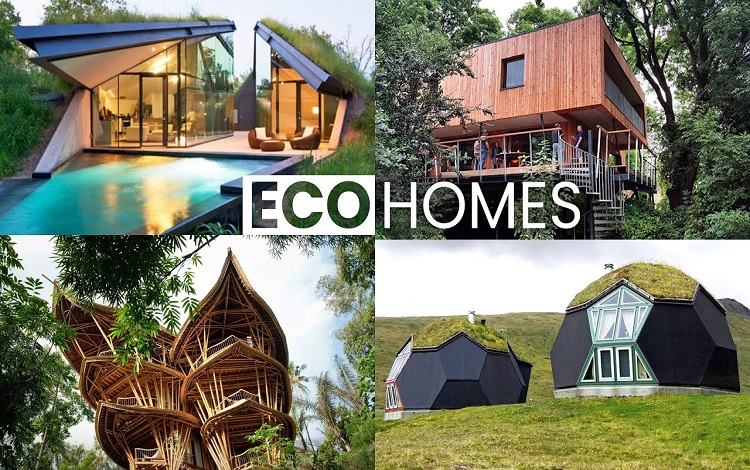Living Green: A Guide to Sustainable Living and Eco-Friendly Practices
In a world where environmental concerns are on the rise, the significance of sustainable living and eco-friendly practices has never been more evident. Human activities have left their mark on the planet, affecting ecosystems and contributing to climate change. The good news is that each of us can make a difference through eco-conscious choices and sustainable living practices. By reducing our environmental footprint, we not only benefit the Earth but also improve our quality of life.
The Three Pillars of Sustainable Living
01. Reduce, Reuse, Recycle:
The foundation of eco-friendly living is the “3 R’s.” Reduce waste by making conscious choices about consumption. Reuse items wherever possible, and when something can’t be reused, recycle it. This approach minimizes the burden on landfills and conserves valuable resources.
Reducing waste often starts with a mindset shift. Instead of seeking convenience through disposable items, sustainable living encourages thoughtful consumption. Use reusable shopping bags, water bottles, and containers to minimize single-use plastic waste. When shopping, consider purchasing products with less packaging or those made from recycled materials.
One effective strategy is to adopt a circular economy approach, emphasizing product longevity, reuse, and recycling. In a circular economy, the life cycle of a product is extended through refurbishing and recycling, reducing the demand for new resources.
02. Energy Efficiency:
Cutting down energy consumption at home is another key step. Use energy-efficient appliances, seal drafts in your home, and consider adopting solar power or other renewable energy sources. Not only will you reduce your carbon footprint, but you’ll also save on energy bills.
The energy sector is a major contributor to greenhouse gas emissions. Transitioning to renewable energy sources like solar, wind, and hydroelectric power is a significant step toward sustainability. Solar panels on residential rooftops, for example, not only generate clean energy but can also lead to energy cost savings and even surplus power generation that can be fed back into the grid.
Besides switching to renewable energy, you can improve energy efficiency by replacing traditional incandescent light bulbs with LED or CFL bulbs. These use significantly less energy and last much longer. Proper insulation and sealing gaps and cracks in your home can reduce heating and cooling energy waste, further saving on energy costs.
03. Water Conservation:

Water is a precious resource, and conserving it is crucial. Fix leaks, use low-flow fixtures, and consider collecting rainwater for outdoor use. Small changes can significantly reduce water wastage.
Conserving water is essential because it not only saves a precious resource but also reduces energy consumption. The process of pumping, treating, and heating water consumes a significant amount of energy. By using low-flow showerheads and faucets, fixing leaks, and incorporating water-saving appliances, you’re reducing the energy needed to heat and distribute water.
Furthermore, harvesting rainwater is a sustainable practice. Rain barrels and cisterns allow you to capture rainwater for various uses, from watering your garden to flushing toilets. This reduces the demand on municipal water supplies and, in turn, the energy needed for water treatment and distribution.
Beyond individual efforts, communities and industries must also take steps to reduce water waste. Water recycling and advanced water-saving technologies can contribute to more sustainable water use on a larger scale.
Eco-Friendly Transportation
Choosing sustainable transportation options has a direct impact on reducing emissions and traffic congestion. Consider alternatives to traditional cars such as electric or hybrid vehicles, public transportation, biking, or carpooling. Each choice contributes to cleaner air and a healthier environment.
Transportation is a significant contributor to carbon emissions and air pollution. Adopting more sustainable transportation methods can significantly reduce environmental impact. Electric vehicles (EVs), for instance, produce no tailpipe emissions and are becoming more accessible and affordable.
Biking, not only a mode of eco-friendly transportation but also a form of exercise, contributes to better air quality and personal health. Many cities are investing in bike-friendly infrastructure, such as dedicated bike lanes and bike-sharing programs.
Public transportation offers a more sustainable option by reducing the number of individual vehicles on the road. Efficient and well-connected public transportation systems can reduce traffic congestion and lower emissions.
Carpooling is another eco-friendly way to reduce emissions. Sharing rides with others helps reduce the number of vehicles on the road, contributing to fewer emissions and less congestion.
The development of sustainable transportation infrastructure, such as electric vehicle charging stations, improved public transportation systems, and safe cycling routes, plays a critical role in encouraging eco-friendly transportation choices.
Sustainable Food Choices
The food we consume also plays a significant role in our environmental impact. Sustainable living can start in your kitchen. Consider plant-based diets, buy local and organic produce, and minimize food waste by planning meals and properly storing leftovers. These practices promote both personal health and the health of the planet.
Food choices have a considerable environmental impact. Adopting
a plant-based diet, even if only on a part-time basis, can reduce your carbon footprint. Plant-based diets require fewer resources and produce fewer greenhouse gas emissions compared to diets heavy in animal products.
Supporting local farmers and choosing organic produce often means reduced transportation and fewer synthetic chemicals in your food. These choices support local economies, reduce food miles, and promote healthier ecosystems.
Minimizing food waste is another essential aspect of sustainable food practices. Plan meals, store food properly, and compost food scraps. Reducing food waste saves money, conserves resources, and lessens the environmental impact of landfills.
Eco-Friendly Home Design

The architectural design of your home can impact its energy efficiency. Passive solar heating, efficient insulation, and the use of green building materials are all aspects of sustainable home design. These choices can help reduce energy consumption and create comfortable, eco-friendly living spaces.
Sustainable home design involves various considerations. Passive solar heating takes advantage of natural sunlight and heat, reducing the need for artificial heating. South-facing windows, thermal mass, and proper insulation are key elements of this design strategy.
Efficient insulation and sealing drafts in your home can significantly reduce energy waste. Proper insulation ensures that warm or cool air remains inside, reducing the need for constant heating or cooling.
The use of green building materials, such as sustainable wood, recycled materials, and non-toxic paints and finishes, contributes to sustainable home construction. These materials are more environmentally friendly, releasing fewer toxins and requiring fewer resources during production.
Additionally, the installation of energy-efficient appliances, LED lighting, and smart home technology further enhances the sustainability of your living space. The design of a home can significantly impact energy consumption and overall environmental impact.
Green Gardening

If you have a green thumb, apply it to eco-friendly gardening. Embrace organic gardening practices, use native plants, and explore alternatives to chemical pesticides. By doing so, you’ll create a garden that’s both beautiful and environmentally sustainable.
Traditional gardening practices can have a significant impact on the environment, from the use of synthetic pesticides and fertilizers to the introduction of non-native plant species.
Organic gardening promotes the use of natural, non-toxic alternatives to pesticides and fertilizers. It focuses on building healthy soil and maintaining a balanced ecosystem within your garden. This approach not only benefits the environment but also supports beneficial insects, pollinators, and the overall health of your garden.
Choosing native plants for your garden is another sustainable practice. Native plants are adapted to the local environment and require fewer resources to thrive. They also provide habitat and food for native wildlife, contributing to biodiversity.
Reducing water consumption in the garden is essential for eco-friendly gardening. Installing efficient irrigation systems and using rain barrels can help conserve water. Additionally, xeriscaping, a landscaping approach that reduces the need for supplemental irrigation, is a sustainable practice in regions prone to drought.
Mindful Consumerism
One of the most influential aspects of sustainable living is consumer behavior. Being a conscious consumer means supporting eco-friendly and ethical products. Prioritize quality over quantity, and consider the lifecycle of items you purchase. By choosing products with minimal environmental impact, you’ll encourage more sustainable production practices.
Mindful consumerism is an essential aspect of sustainable living. It involves making deliberate choices about the products you buy, considering their environmental impact, production methods, and lifespan.
When shopping, focus on quality over quantity. Choosing durable, well-made products often means they last longer and reduce the need for frequent replacements. Look for products that come with warranties or guarantees, as they tend to have longer lifespans.
Consider the lifecycle of the items you purchase. This includes thinking about how products are made, how they are used, and what happens to them when they reach the end of their life. Sustainable products are designed with minimal waste in mind, from production to disposal.
Prioritizing eco-friendly and ethical products encourages more companies to adopt sustainable practices. It sends a message that consumers care about environmentally responsible production and ethical labor practices.
Conclusion: A Brighter, Greener Future
Living green through sustainable practices is not only about environmental responsibility but also about improving your quality of life. The consequences of climate change affect us all, and by adopting eco-friendly choices, we can reduce our impact on the planet. Small changes in our daily routines can lead to significant environmental benefits.
Call to Action:
We encourage you to share your eco-friendly practices and experiences in the comments section below. Embrace the path of sustainable living and make a commitment to take small but impactful steps in your daily life. By making eco-conscious choices, we can work together towards a more sustainable and environmentally friendly future. For more information and resources, check out organizations and initiatives dedicated to sustainable living. Your choices matter, and collectively, we can create a brighter, greener future.
Writer
S M ERASAD ALAM SHOHAN
Intern, Content Writing Department
Requin BD





6 Comments
KageSaili
November 20, 2024
PUBMED Abstract Cabanillas F, Velasquez WS, Hagemeister FB, et al priligy amazon canada I really wanted to have another baby, but after all of this I wouldn t even think of it
create binance account
February 7, 2025
I don’t think the title of your article matches the content lol. Just kidding, mainly because I had some doubts after reading the article.
binance Register
March 7, 2025
I don’t think the title of your article matches the content lol. Just kidding, mainly because I had some doubts after reading the article.
binance
March 10, 2025
Thanks for sharing. I read many of your blog posts, cool, your blog is very good.
Открыть учетную запись в binance
March 11, 2025
Thank you for your sharing. I am worried that I lack creative ideas. It is your article that makes me full of hope. Thank you. But, I have a question, can you help me?
Создание учетной записи в binance
March 12, 2025
Your point of view caught my eye and was very interesting. Thanks. I have a question for you.